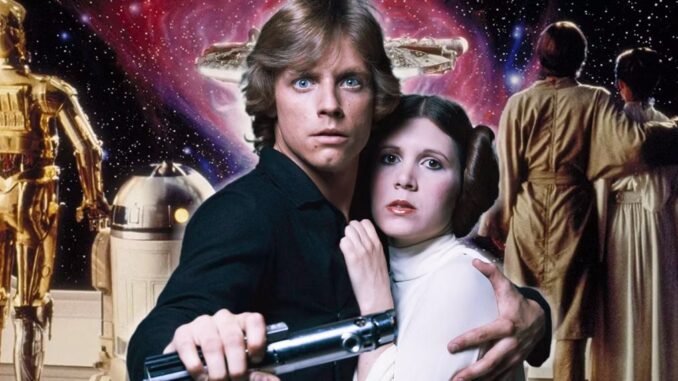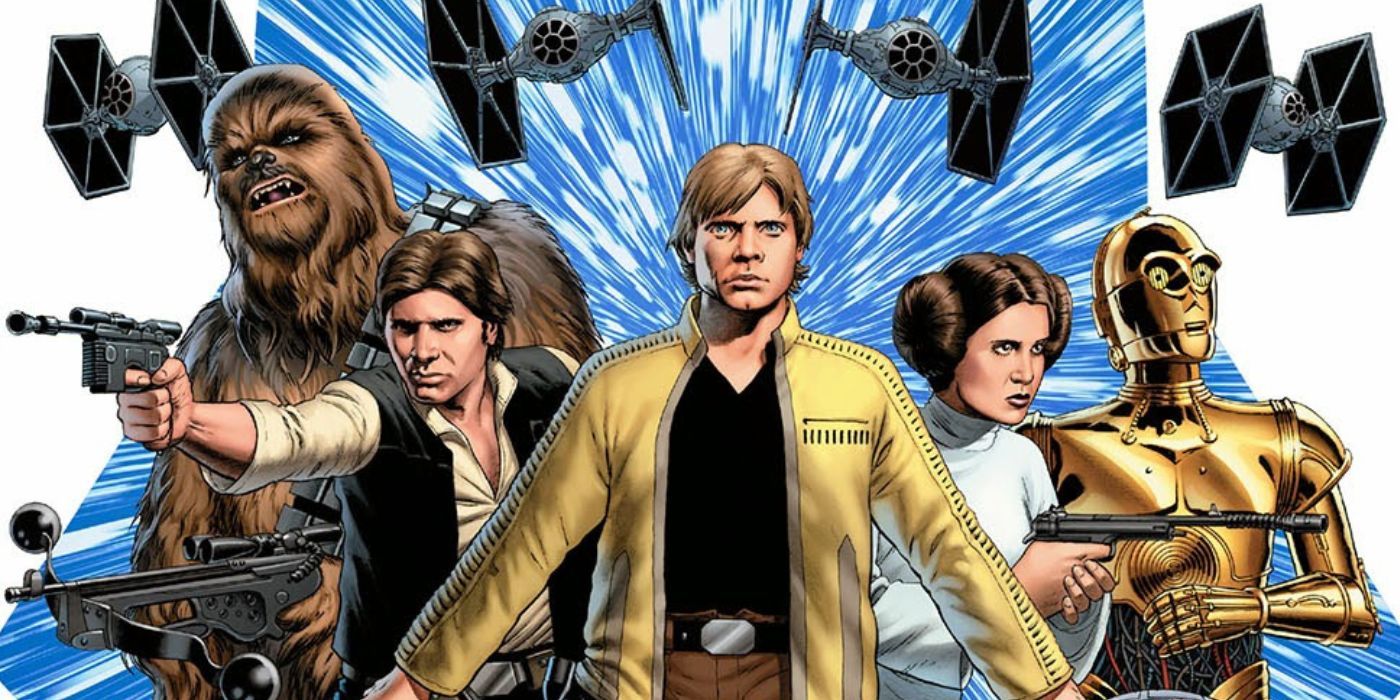
Empire Strikes Back’s Darker Ending Would’ve Made The Best Star Wars Film Better
The Empire Strikes Back still stands as the fan-favorite Star Wars movie, but the original ending was much darker and would’ve made it even better.

Even after 11 live-action movies and an ever-growing list of shows, Star Wars: The Empire Strikes Back still stands as the pinnacle of the Star Wars franchise. The 1980 sequel perfectly took the groundwork of Star Wars: A New Hope and developed it further, adding some huge twists and turns in the process. Although clearly one of the darker movies in the franchise, The Empire Strikes Back cliffhanger was originally intended to be much sadder.
At the end of the film, the Rebel Alliance flees from the Empire, Luke Skywalker discovers that Darth Vader is his father, and the heroes lose Han Solo to Boba Fett. Despite those setbacks, the movie ends on an upbeat note, as Lando Calrissian sets off with Chewbacca to find Han, while Luke recovers with Leia and the droids aboard a medical ship — with a hopeful John Williams song playing in the background. That wasn’t initially supposed to be the case, as those heartwarming moments were incorporated after principal photography had wrapped. In fact, the original Empire Strikes Back ending was far bleaker.
Updated by Timothy Blake Donohoo on March 6, 2024: Star Wars is still in many ways defined by the original trilogy of movies, with The Empire Strikes Back being the most beloved. For as dark as the final product was, however, the Empire Strikes Back original ending was much harsher, lacking the more hopeful finale. In the years since the movie’s release, fans have increasingly yearned for darker Star Wars material. This has come in a variety of ways, but the question remains concerning how the original end of Empire Strikes Back might have changed the property’s trajectory.
The mystery of the Empire Strikes Back original ending was revealed through a social media post. Two fans discussed The Empire Strikes Back’s closing moment on Twitter (Now X), and one of them asked Mark Hamill for his take.
Filmed 4 months after we wrapped principal photography on #ESB, it wasn’t a “re-shoot”, it was an added scene. Concerned about the downbeat ending & thorough defeat of the protagonists, they wanted to add an uplifting moment of hope & rejuvenation to reassure the audience. https://t.co/VIMbC3YprU pic.twitter.com/MG41dr8fgu
— Mark Hamill (@MarkHamill) March 8, 2022
The words of the iconic Luke Skywalker actor suggest that, in the original draft of the film, the Millennium Falcon rescues Luke, avoids the TIE fighters, and escapes the Super Star Destroyer, which would have been the ending. However, the studio was concerned about how the dark conclusion would fare with audiences, especially considering the jubilant ceremony that closes A New Hope. Therefore, the tone was changed for presumably commercial purposes. That said, there’s an argument to be made that the original close would have improved the Empire Strikes Back ending because it sticks closer to the film’s overall tone.
From start to finish, The Empire Strikes Back is filled with setbacks and failures. Despite the optimistic ending of A New Hope, the Empire remains as powerful as ever and forces the Rebellion to evacuate Hoth. Then, with the Empire’s arrival at Cloud City, the villains remain one step ahead. And so, with the Star Wars franchise revolving around hope, this can seem out of character. However, the idea of hope is only made better when the heroes are faced with seemingly impossible odds and still somehow manage to make it out alive (and mostly unharmed).
The story of Luke Skywalker is also full of failure, despite his being such a heroic figure. The film opens with him being attacked by a Wampa; he likely would’ve died from his injuries or exposure if it hadn’t been for Han. Then, during his training on Dagobah, he repeatedly disregards Master Yoda’s teachings and fails to lift his sunken X-wing. While going to save his friends is the morally right action, Luke doesn’t even succeed at that, instead ending up hanging from an antenna beneath Cloud City after losing a hand. This could have culminated in an even more brutal Empire Strikes Back ending, had things not been changed.
Death and tragedy haunt the heroes all throughout The Empire Strikes Back, so ending on a positive note does feel somewhat out of place. The sadness of Han’s carbonite conundrum loses its emotional power once his roguish ally Lando flies off to rescue him, and the impact of Luke’s missing hand goes away once it’s rebuilt. So, while The Empire Strikes Back’s original ending may have been a bit too much for audiences, wrapping on a darker note would’ve fit perfectly.
Though the original Empire Strikes Back ending wasn’t used, the franchise has taken some darker turns since then. J.J. Abrams and Rian Johnson decided to take Star Wars in a completely different direction with the Sequel Trilogy. The Force Awakens features a seemingly random protagonist called Rey, who doesn’t even have a last name until The Rise of Skywalker. Numerous inconsistencies and retconning events aside, the Sequel Trilogy is distinct in that all three movies end on ominous notes. In The Force Awakens, Han Solo mistakenly believes that he can restore his son Ben to the path of righteousness. Unfortunately, the influence of Snoke transformed Ben into the vicious Kylo Ren at this point. Son kills father in one of the most shocking moments in the entire franchise. Many fans expected (or hoped) that Han would return, perhaps as a Force ghost, but that was not to be.
There are several dark moments in The Last Jedi, from Vice Admiral Amilyn Holdo’s noble sacrifice to Admiral Ackbar’s offscreen demise. Even Leia nearly perishes at the beginning of the film. That said, the most unexpected death is that of Luke Skywalker, the central figure of Star Wars and arguably one of the most iconic movie protagonists in cinema history. Luke’s death was not taken well by many fans, explaining why TLJ was review-bombed on Rotten Tomatoes. And finally, both Leia and her son die in The Rise of Skywalker, effectively ending the Skywalker dynasty. At the same time, it can be argued that Rey’s decision to name herself Skywalker will keep the family’s legacy alive.
Star Wars was largely a movie franchise for many years until the advent of Star Wars: The Clone Wars in 2008. Streaming services kicked the trend into overdrive starting with 2019’s The Mandalorian. The television format more closely reflects the 1930s movie serials that helped inspire Star Wars in the first place and often utilizes cliffhangers to draw audiences from one episode into the next. That gives them more license to explore darker endings, which can be expressed more often and more readily.
Star Wars: The Bad Batch, for instance, ends Season 1 with the genocidal destruction of Kamino City, while the live-action Andor Season 1, Episode 7, “Announcement” concludes with the protagonist unjustly arrested and sent to prison. The Andor series as a whole has been lauded by many, with even one of its stars referring to it as “Star Wars for grownups.” This speaks to how many fans want darker stories in the galaxy far, far away that deal with the ramifications of the main movies. The same holds true for 2016’s Rogue One: A Star Wars Story, which culminates in the death of all the protagonists under an Imperial assault. That, too, sees a speedy resolution, as the film’s coda shows Princess Leia gaining the plans to the Death Star: leading directly to the events of A New Hope and confirming that Rogue One’s heroes didn’t die in vain. At the same time, it’s the closest thing to the original Empire Strikes Back ending, even if things conclude on a happy note.
21st-century audiences can’t be fazed very easily, which is probably why major characters can be killed off without the franchise losing its financial steam. The sheer number of new Star Wars projects demands that creators look at more downbeat and pessimistic material as well as the optimistic swashbuckling side of the saga. It’s easier to mitigate the impact of a grim ending if resolution arrives in a few weeks or months, rather than the three years audiences had to wait for Return of the Jedi to finally reveal Han Solo’s rescue. This is why such grim cliffhangers as the Empire Strikes Back ending are still heralded today, with modern movies being compared to the Star Wars film’s finale. However, it’s important that dark endings add value to their respective stories or risk alienating the fandom entirely. The Empire Strikes Back goes far darker, far earlier in the saga than anyone was expecting. In the fullness of time, such pessimism fits its mode completely, but in 1980, it might have been a step too far. Sometimes it’s just better to end a story with hope and optimism, especially when the rest of the movie is so tragic.
